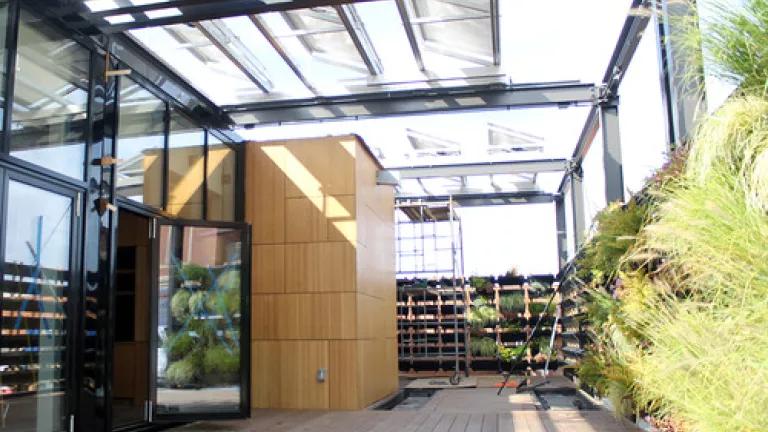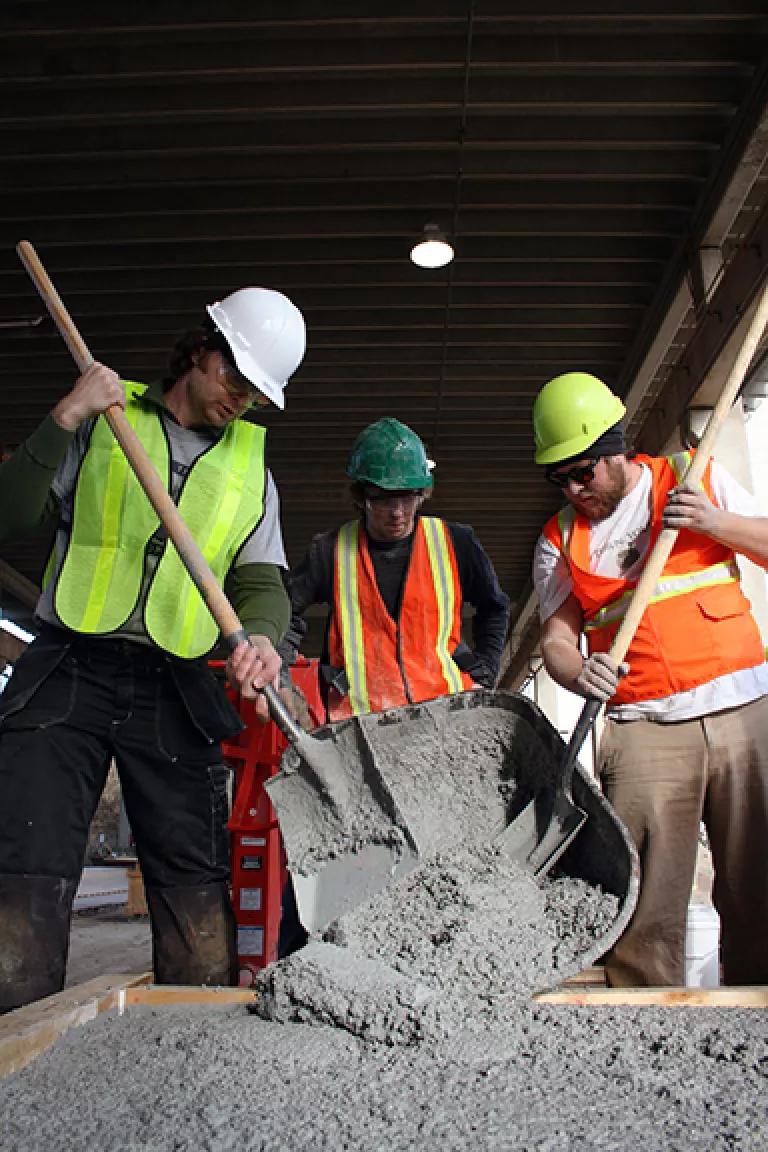UNC-Charlotte's Solar Decathlon Entry Shows the Benefits of Green Building for North Carolina

For Clarke Snell, an architecture graduate student at the University of North Carolina-Charlotte, participating in this year’s Solar Decathlon is kind of a dream come true. “This is a unique event,” says Snell, who hopes to design carbon-neutral houses after he graduates. “There’s nothing like it in the world.”
UNC-Charlotte's Solar Decathlon entry, Urban Eden, during construction. The home highlights the many benefits that renewable energy and green building can bring to North Carolina. (Photo: Clarke Snell)
The decathlon, organized by the Department of Energy’s National Renewable Energy Laboratory, is kicking off today at Orange County Great Park in Irvine, California. (That’s despite the federal government shutdown. The Decathlon was pre-funded and is partially underwritten by private sponsors.) This incredible contest brings together college and university teams from all over the world in a head-to-head competition to advance green building and solar energy innovation. Plus, it’s a rockin’ fun event; the last one, two years ago in Washington DC, drew more than 350,000 visitors.
The student teams, including both undergrads and grad students, design, build, and, for 10 days, operate solar-powered houses that are “cost-effective, energy-efficient, and attractive.” (That’s NREL speaking.) These net-zero homes, designed to use only as much energy as their solar panels produce, are put through their paces, in 10 separate competitions. The winner, an NREL spokesperson says, “is the team that best blends affordability, consumer appeal, and design excellence with optimal energy production and maximum efficiency.”
For North Carolina’s team and Snell, this year’s Decathlon isn’t just a chance to gain some life-changing experience. (SD alums have gone on to become trailblazers in the fields of solar and green buildings.) It’s also a chance to showcase how green technologies, like solar and a special form of concrete developed at UNCC, and the public policies that encourage them, can make their state a better place.
Work on Solar Decathlon homes begins long before the event itself. About two years ago, the UNCC team almost unanimously decided on an urban infill project—one that could bring new housing to undeveloped areas inside Charlotte—rather than designing a home for the more energy-intensive suburbs. (Infill decreases energy consumption—and, by extension, air and global warming pollution—and improves public health by creating walkable/bikeable communities close to public transportation.) “It’s pretty amazing when you get 20 architecture students to agree on a concept,” Snell notes. “We just went with infill and moved on from there.”
Called “Urban Eden,” the strikingly modern home uses some of the energy-smartest ideas in heating and cooling. A south-facing wall of insulated glass doors helps capture the sun’s heat in winter. And a moveable, roof-mounted solar array shades an adjoining outdoor “room” in the summer, thereby blocking the sun from heating the house.
The outdoor walls are a stylish concrete, made using a revolutionary new process developed right at UNCC, by engineering professor Brett Tempest and field tested by architecture professor Thomas Gentry. Concrete might not seem the most eco-friendly building material at first. In fact, the production of Portland cement, conventional concrete’s binding material, is responsible for 5-8 percent of the world’s greenhouse gases.

Members of the UNCC Urban Eden team with their revolutionary geopolymer concrete. (Photo: Clarke Snell)
By contrast, Tempest’s geopolymer cement cuts greenhouse gas production by as much as 90 percent. That’s pretty eye-popping. And not only is geopolymer cement good for our increasingly fragile atmosphere, it’s good for local economies, too. The UNCC team’s pre-cast walls were assembled with the help of a local pre-casting contractor—a process that can be replicated statewide and nationwide, should the material gain more mainstream acceptance; many innovations that have gotten their start at previous solar decathlons already have. “Bringing new materials into the conservative construction field is very difficult,” says Snell, who’s writing his master’s thesis on geopolymer cement. “To have a chance to put this into practice is amazing.”
The concrete isn’t the only local product the UNCC team has used that highlights the benefits energy efficiency, solar energy and green building bring to the North Carolina economy. Electrolux, the global appliance manufacturer whose US headquarters is located in Charlotte, donated the high-efficiency washer and drier, as well as the kitchen appliances. Earthpaint, an Asheville manufacturer, supplied most of the indoor and outdoor finishes. International efficiency experts Ingersoll-Rand, with its US headquarters in Davidson, NC, supplied state-of-the-art HVAC equipment, building controls as well as volunteers and mentoring.
Public policy isn’t a topic that usually comes up at this event. This year, though, efforts to undermine government clean energy programs, both in North Carolina and at the federal level, have changed that somewhat. Snell says the Decathlon itself highlights the importance of federal, state and local clean energy initiatives. “Here’s this world-changing material that’s being developed by a great guy—Professor Tempest—at UNCC,” Snell says. “Without the Solar Decathlon, funded by the Department of Energy, it would still be in the lab instead of out in the community.”
Where, with the help of government clean energy initiatives, Clarke Snell’s and UNCC’s dream is coming true, at Orange County Great Park, in Irvine, California.

